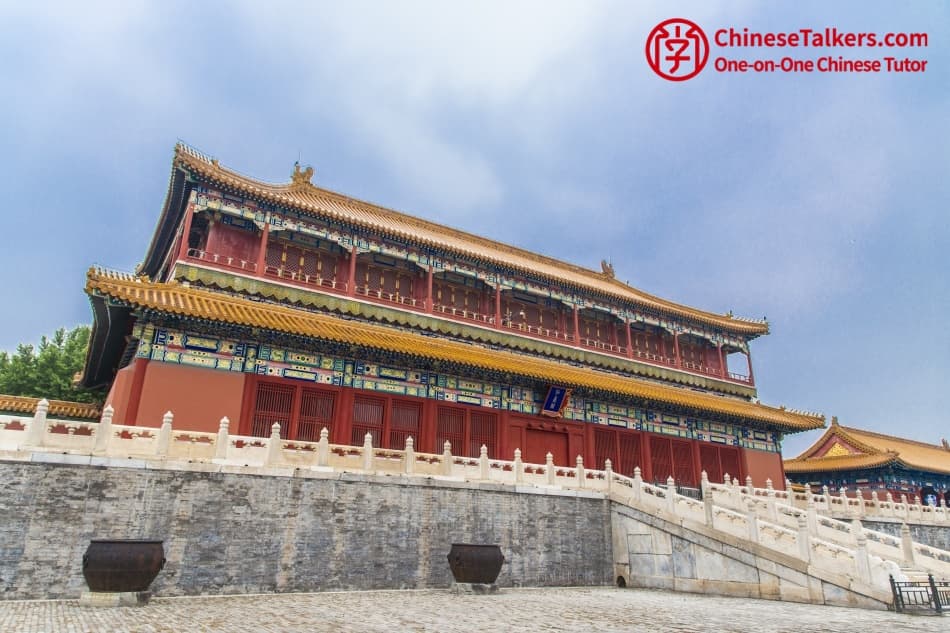
The Difference Between ‘了’, ‘过’, and ‘着’—Explained Clearly!
Release Date:2025-05-25 21:42:24 ChineseTalkers
The Difference Between ‘了’, ‘过’, and ‘着’—Explained Clearly!
Learning Chinese can be both exciting and challenging, especially when it comes to understanding particles like ‘了’, ‘过’, and ‘着’. These three characters are essential for expressing different aspects of actions, but they often confuse learners. In this article, we’ll break down The Difference Between ‘了’, ‘过’, and ‘着’—Explained Clearly! to help you master their usage with confidence.
1. Introduction to ‘了’, ‘过’, and ‘着’
Before diving into the details, let’s briefly introduce these three particles:
- 了 (le): Indicates a completed action or a change of state.
- 过 (guo): Refers to a past experience or something that happened before.
- 着 (zhe): Shows an ongoing action or a continuous state.
While all three relate to actions, they serve distinct purposes. Misusing them can lead to misunderstandings, so it’s crucial to grasp their differences.
2. The Role of ‘了’ (le)
2.1 Completed Actions
‘了’ is most commonly used to mark the completion of an action. It often appears at the end of a sentence or right after the verb.
Examples:
- 我吃了饭。 (Wǒ chī le fàn.) – I ate (completed the action of eating).
- 他去了北京。 (Tā qù le Běijīng.) – He went to Beijing.
2.2 Change of State
‘了’ can also indicate a change in a situation or state.
Examples:
- 下雨了。 (Xià yǔ le.) – It started raining (change from not raining to raining).
- 我累了。 (Wǒ lèi le.) – I’m tired now (change from not tired to tired).
2.3 Common Mistakes with ‘了’
- Overusing ‘了’: Not every past action requires ‘了’. It’s only for completed actions or changes.
- Misplacing ‘了’: It usually follows the verb or appears at the end of the sentence.
3. The Role of ‘过’ (guo)
3.1 Past Experiences
‘过’ emphasizes that an action has been experienced in the past, often implying the speaker’s familiarity with it.
Examples:
- 我去过中国。 (Wǒ qù guo Zhōngguó.) – I have been to China (at some point in the past).
- 她学过中文。 (Tā xué guo Zhōngwén.) – She has studied Chinese before.
3.2 Negation with ‘过’
To say you’ve never done something, use ‘没’ or ‘没有’ before the verb and ‘过’ after it.
Examples:
- 我没看过这部电影。 (Wǒ méi kàn guo zhè bù diànyǐng.) – I haven’t seen this movie before.
- 他没有去过日本。 (Tā méiyǒu qù guo Rìběn.) – He has never been to Japan.
3.3 Common Mistakes with ‘过’
- Confusing ‘过’ with ‘了’: ‘过’ focuses on experience, while ‘了’ focuses on completion.
- Omitting ‘过’ in negative sentences: Always include ‘过’ when negating past experiences.
4. The Role of ‘着’ (zhe)
4.1 Ongoing Actions
‘着’ indicates that an action is ongoing or a state is continuous. It’s often used to describe what someone is doing at a specific moment.
Examples:
- 她坐着。 (Tā zuò zhe.) – She is sitting (in a continuous state).
- 门开着。 (Mén kāi zhe.) – The door is open.
4.2 Simultaneous Actions
‘着’ can also show two actions happening at the same time.
Examples:
- 他笑着说话。 (Tā xiào zhe shuōhuà.) – He is speaking while smiling.
- 她哭着跑出去。 (Tā kū zhe pǎo chūqù.) – She ran out while crying.
4.3 Common Mistakes with ‘着’
- Using ‘着’ for completed actions: ‘着’ is only for ongoing or continuous states.
- Overusing ‘着’: Not all continuous actions require ‘着’; sometimes context alone suffices.
5. Comparing ‘了’, ‘过’, and ‘着’
To make The Difference Between ‘了’, ‘过’, and ‘着’—Explained Clearly!, let’s summarize their uses in a table:
| Particle | Function | Example | Translation |
|---|---|---|---|
| 了 (le) | Marks completion or change | 我吃了饭。 | I ate (completed action). |
| 过 (guo) | Indicates past experience | 我去过北京。 | I have been to Beijing. |
| 着 (zhe) | Shows ongoing action/state | 她坐着。 | She is sitting. |
6. Practical Examples in Context
Let’s see how these particles work in real-life scenarios:
了 (le):
- 昨天我买了一件新衣服。 (Zuótiān wǒ mǎi le yī jiàn xīn yīfu.) – Yesterday, I bought a new piece of clothing (completed action).
- 天气变冷了。 (Tiānqì biàn lěng le.) – The weather has gotten colder (change of state).
过 (guo):
- 你吃过饺子吗? (Nǐ chī guo jiǎozi ma?) – Have you ever eaten dumplings?
- 我没见过他。 (Wǒ méi jiàn guo tā.) – I’ve never seen him before.
着 (zhe):
- 他站着等我。 (Tā zhàn zhe děng wǒ.) – He is standing and waiting for me.
- 灯还亮着。 (Dēng hái liàng zhe.) – The light is still on.
7. Common Questions About ‘了’, ‘过’, and ‘着’
To further clarify The Difference Between ‘了’, ‘过’, and ‘着’—Explained Clearly!, here are some frequently asked questions:
Q1: Can ‘了’ and ‘过’ be used together?
A: No, they serve different purposes. ‘了’ marks completion, while ‘过’ indicates experience. For example:
- 我去了北京。 (Wǒ qù le Běijīng.) – I went to Beijing (completed action).
- 我去过北京。 (Wǒ qù guo Běijīng.) – I have been to Beijing (past experience).
Q2: Is ‘着’ only used for actions happening now?
A: Not necessarily. ‘着’ can describe a continuous state, even if the action isn’t happening at this exact moment. For example:
- 墙上挂着一幅画。 (Qiáng shàng guà zhe yī fú huà.) – A painting is hanging on the wall (continuous state).
Q3: Why is ‘了’ sometimes at the end of a sentence?
A: When ‘了’ appears at the end, it often indicates a change of state rather than a completed action. For example:
- 下雨了。 (Xià yǔ le.) – It’s raining now (it wasn’t before).
Q4: Can ‘过’ be used for recent actions?
A: ‘过’ refers to past experiences, regardless of how recent. However, it emphasizes the experience rather than the timing.
8. Advanced Tips for Using ‘了’, ‘过’, and ‘着’
了 (le):
- Use ‘了’ after the verb for completed actions.
- Place ‘了’ at the end of the sentence for changes of state.
- Avoid using ‘了’ for habitual or future actions.
过 (guo):
- Always place ‘过’ after the verb.
- Use ‘没’ or ‘没有’ for negation.
- Remember that ‘过’ implies the action is no longer happening.
着 (zhe):
- Use ‘着’ for actions or states that are ongoing.
- It often pairs with verbs like ‘坐’ (sit), ‘站’ (stand), or ‘挂’ (hang).
- Don’t use ‘着’ for completed or one-time actions.
9. Practice Exercises
Test your understanding of The Difference Between ‘了’, ‘过’, and ‘着’—Explained Clearly! with these exercises:
Fill in the blanks with ‘了’, ‘过’, or ‘着’:
- 我昨天看____一场电影。 (Wǒ zuótiān kàn ____ yī chǎng diànyǐng.)
- 她穿____一件红色的裙子。 (Tā chuān ____ yī jiàn hóngsè de qúnzi.)
- 你去____上海吗? (Nǐ qù ____ Shànghǎi ma?)
Translate the following sentences into Chinese:
- She has read this book before.
- The children are playing outside.
- I finished my homework.
10. Final Thoughts
Mastering ‘了’, ‘过’, and ‘着’ takes practice, but understanding their distinct roles will significantly improve your Chinese fluency. Keep these tips in mind, and soon you’ll use them naturally in conversations.
Remember, The Difference Between ‘了’, ‘过’, and ‘着’—Explained Clearly! lies in their functions: completion, experience, and continuity. With consistent practice, you’ll confidently navigate these essential particles.
Start Your Chinese Learning Journey
ChineseTalkers – From Basics to Mastery, From Exams to Business



